by Berit Erickson
On July 6th, Wild Pollinator Partners organized a tour of the Kanata North Pollinator Patch (and related projects) in the Kanata North Hydro Corridor. There was a great turnout. We learned a lot from the organizers and guests, admired the gardens, and observed bees.
The Ottawa Wildflower Seed Library was also there to answer questions about native plants and give away free native plant seeds and seedlings. Other local pollinator gardeners, including members of the Ottawa South Eco-Action Network – OSEAN andEco West Enders, shared information too.
Ottawa Stewardship Council early efforts
Bob McFetridge, of the Ottawa Stewardship Council (OSC) first talked about early efforts to rehabilitate the corridor. Seven years ago, OSC was looking for a meadow project and decided to experiment here because the corridor was due for its regular 6-year Hydro One clearing of vegetation. As well, hydro corridors have huge potential – they offer hundreds of kilometres of green space that can be returned to a natural state benefiting wildlife and nearby residents alike. With help from then local councillor Marianne Wilkinson, OSC was invited to assist with the Hydro One project.
Hydro One cleared space between Terry Fox Road to just north of Brady and distributed native seeds throughout the sizable area, ultimately with mixed long-term success. While the area filled with native plants and grasses, it subsequently has been decimated by mowing. An astonishing 95% of the vegetation now in the corridor is invasive plants. For more information about OSC’s involvement in the corridor, visit the OSC’s Morgan’s Grant Hydro Corridor Revitalization project page.
OSC-Kanata North Regeneration Stewards at the helm
Undaunted, OSC and local residents are trying again to add native plants and create pollinator habitat in this hydro corridor. Lyndee Wolf of Kanata North Regeneration Stewards shared her recent experience leading this project. One plot at a time, volunteers are clearing invasives, planting, watering, and weeding.
Our tour centred around a triangular garden planted where high-traffic pathways from the adjacent neighbourhood intersect. Last year, once invasives were removed, native plant seedlings were added, some grown by volunteers and others bought from native plant nurseries. More seedlings were added this year, bringing the total number to 1100 plants of 40 species blooming from April to October.
Visitors are welcomed into the garden by a charming path of homemade stepping stones. Painted rocks are also dotted the garden edges. To identify plants, wooden labels have common names printed using pyrography.
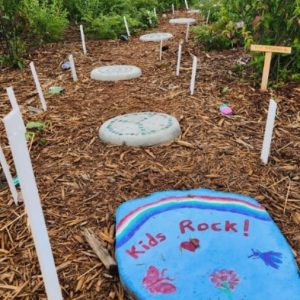 |
In another plot, after removing invasives, they tried spreading seeds instead of planting seedlings. As seeds germinated in the spring, the native seedlings were overwhelmed by re-emerging invasives and new ones growing from the seed bank, so volunteers planted 22 species of native plant seedlings. The invasives are so persistent that newly planted beds must be weeded every 2 or 3 days to ensure that the native seedlings have a fighting chance. Once the native species establish they will be able to duke it out with any remaining invasives.
The most formidable invasive in the corridor is biennial Wild Parsnip. Volunteers were recently trained by the Ontario Invasive Plant Council to remove this non-native dangerous species effectively and safely. The root must be cut at a 45 degree angle below soil level. Large infestations are being scythed to prevent it from going to seed. It will take several years to exhaust the seed bank.
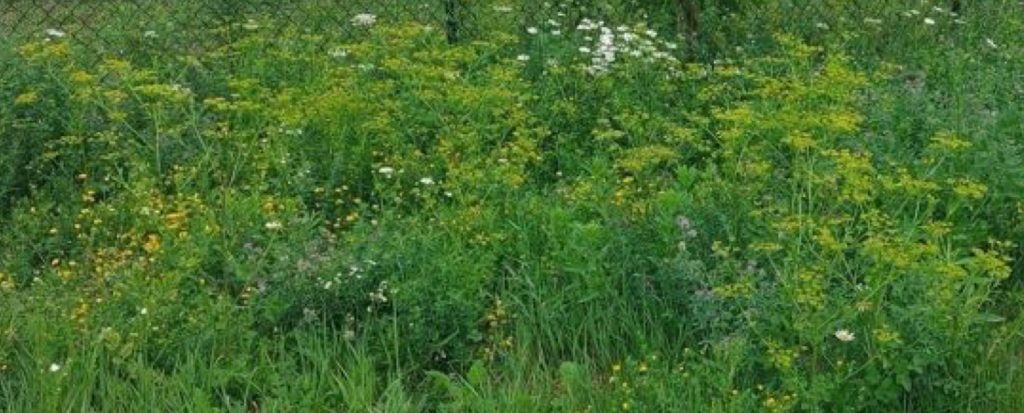
Wild Parsnip (yellow flowers) in the corridor. Photo from the Morgan’s Grant Hydro Corridor Pollinator Project, Summer 2021 Final Report.
Corridor meadow habitat is ideal for native bees
Dr. Jessica Forrest, a University of Ottawa professor and bee researcher, was on hand to identify pollinators. Jessica explained that open, sunny habitats like meadows in the corridor, are preferred by most native bee species.
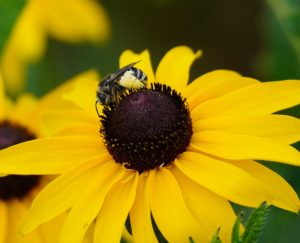 This bee visiting a Black-eyed Susan flower had lots of pollen packed onto her back legs. According to Jessica it is in the Melissodes genus, Long-horned bees. |
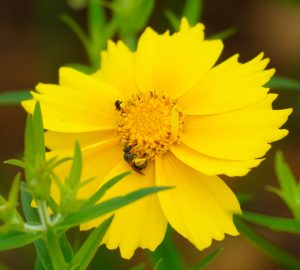 A bee and another insect sharing a Lance-leaf Coreopsis flower. It is a Lasioglossum (halictid) of some sort. |
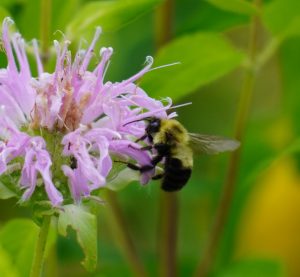 A bumblebee drinking nectar from a Wild Bergamot flower. It looks like a male Bombus, seemingly B. bimaculatus. |
After a tour attendee asked about the large bee hotel that had been installed in the corridor several years ago, but was later removed, Jessica discussed native bee nesting styles and how we can support them. Since 70% of native bees nest in the ground, we should try to minimize disturbing the ground. The other 30% of bees nest in various cavities. While we can add well-designed bee houses to our gardens, it isn’t necessary. Bees will nest in holes naturally made by beetles in old wood, or in pithy stems left standing (at least 12 inches tall) when we cut back plants in the spring. For more on pollinator-friendly garden maintenance, see our blog post: Less is more: spring pollinator garden clean-up.
She also explained that nectar in flowers is replenished, so bees will revisit the same flowers. However, pollen is finite, so bees can only collect it once.
Planting native plants in your neighbourhood hydro corridor
Former City councillor, Marianne Wilkinson also joined our tour sharing interesting historical information about Kanata community garden projects she’s been involved in over the years, including the hydro corridor.
Attendees asked for advice on how to gain permission to plant native species in their own neighbourhood hydro corridors. Bob recommended going to your local councillor first for guidance. OSC volunteers are also willing to share details of their experiences with the process. He explained that Hydro One’s first priorities are the integrity of hydro wires and towers and the safety of staff working around them. Beyond that, they’re interested in working with communities. Visit the Ottawa Stewardship Council or Kanata North Regeneration Stewards for more information.
Bob says that effective stewardship requires patience. Organizations and politicians need education and encouragement. Invite them to be involved from the beginning, plan to steadily push them toward your end goal, and hopefully they will gradually respond.
Every native plant garden helps support pollinators
Lyndee concluded by sharing some of their vision for the future of the corridor. They’d like to incorporate a regenerative food garden to help build community, encourage interaction, and support those in need.
Hydro corridors have huge potential. The Meadoway in Toronto and BC Hydro’s regreening program prove that corridors can provide habitat for pollinators and can enrich communities. The OSC’s Kanata North Regeneration Stewards is paving the way to improve corridors in our region.
Please be sure to check our Upcoming activities page for more WPP garden tours over the summer.
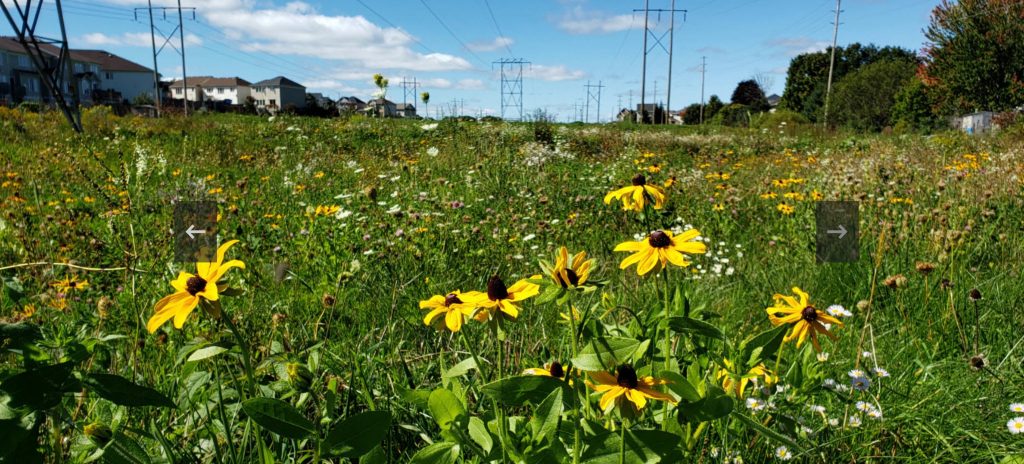
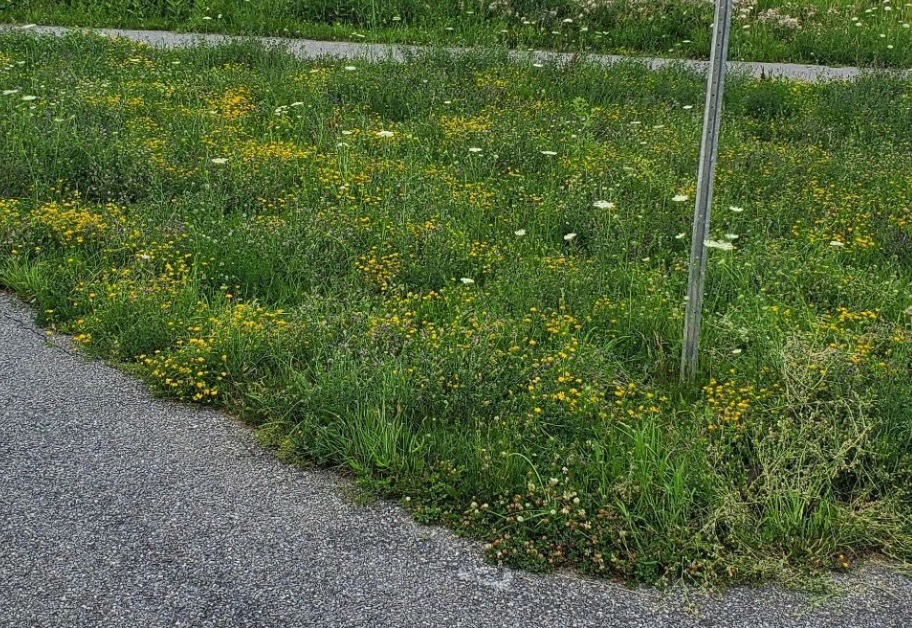
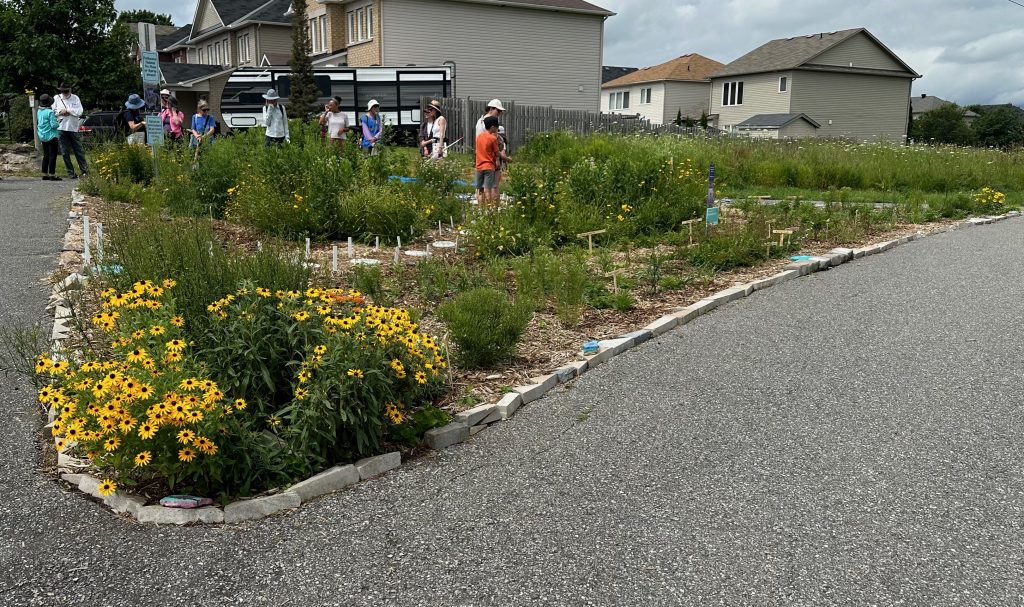
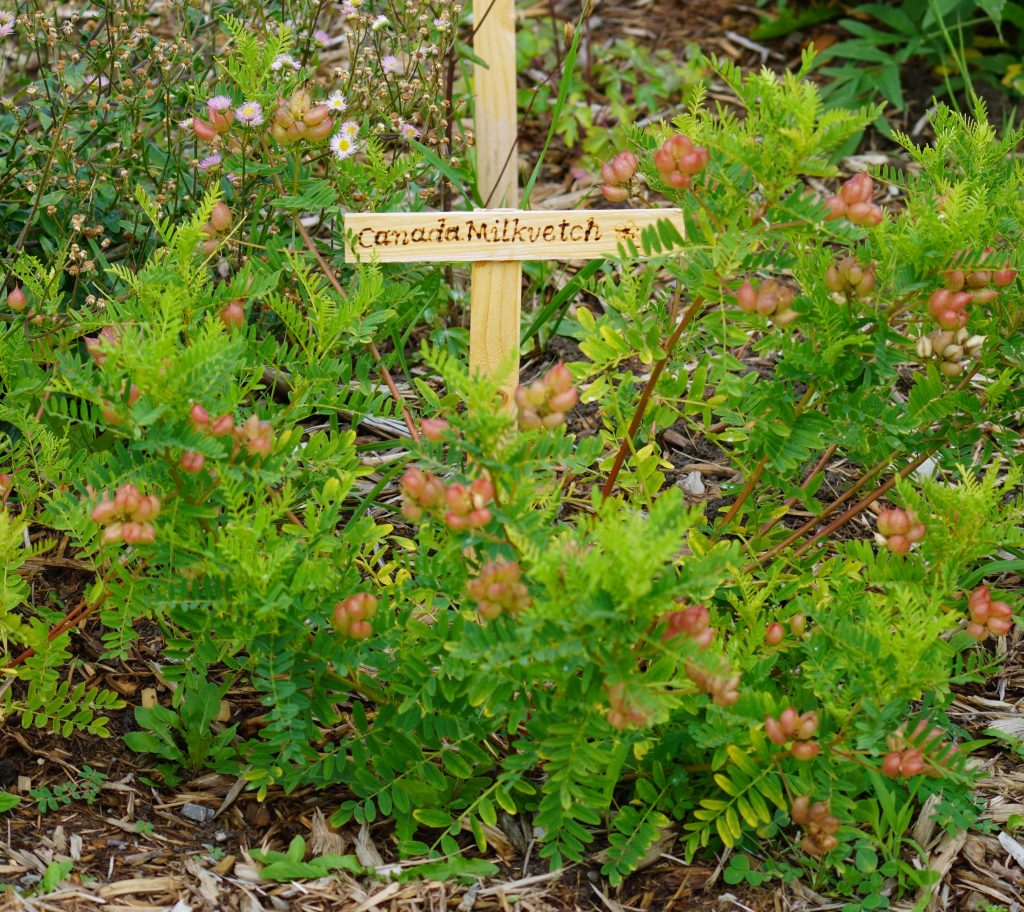
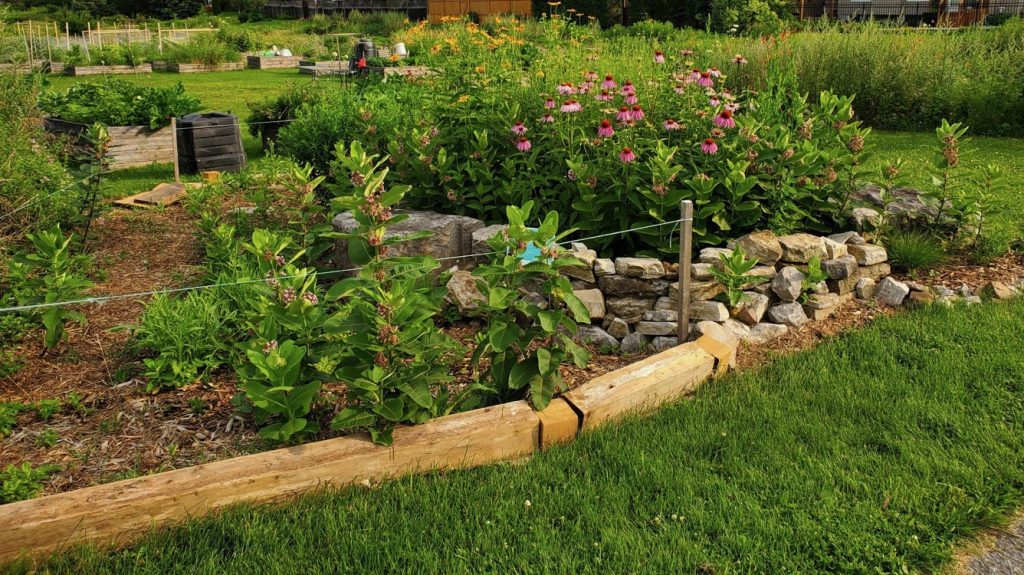
Excellent article. Thank you for the inspiration!